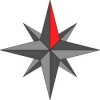There are so many questions and emotions associated with retirement. The secret to dealing with this situation is planning whether you are a first year, a tenth year or a last year employee.
How will I save for retirement and all the other needs of my family? How do I invest? Will I have enough savings? Will I relocate? Should I volunteer or work for income. Can I travel? What can I do with my time?
The concerns are personal and legitimate. Your retirement should be based on what you want to do. It is normal to be concerned.
Spousal, family or financial issues always enter into the process, but yours is the opinion that counts. Use caution when it comes to letting others have too great an impact on your thoughts.
For a prospective retiree this is a stressful time. The best way to approach retirement at any stage of your career is with a flexible plan. The plan can be an ever-changing series of thoughts that can be as simple as “I will wait for my decision until Social Security”, “I will accumulate a certain dollar amount” or “I will open a 403b or Tax Sheltered Annuity”. These all work. Planning can and will help your thinking about and expanding your thoughts on retirement.
In my 16 years as a retirement counselor one thing stands out. People with a plan have an easier time with the emotion of retirement. Finances are important but the emotional side of retirement is important too!
If you need or want help getting started with your plan or “wrapping up” your career, may I suggest that you visit the NYSTRS website or attend one of their seminars. Beware of insurance company invitations.
You can also call me or set-up an appointment to discuss any and all retirement matters. I welcome your inquiries.
Hank Sessa
NYSRetirement Guide
631-335-8201



